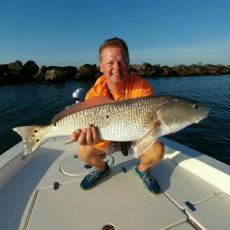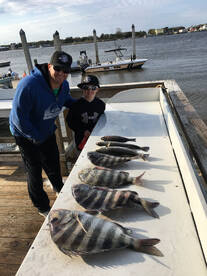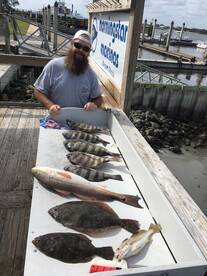Kingfish in July
July 24, 2016
Jacksonville
1 photo
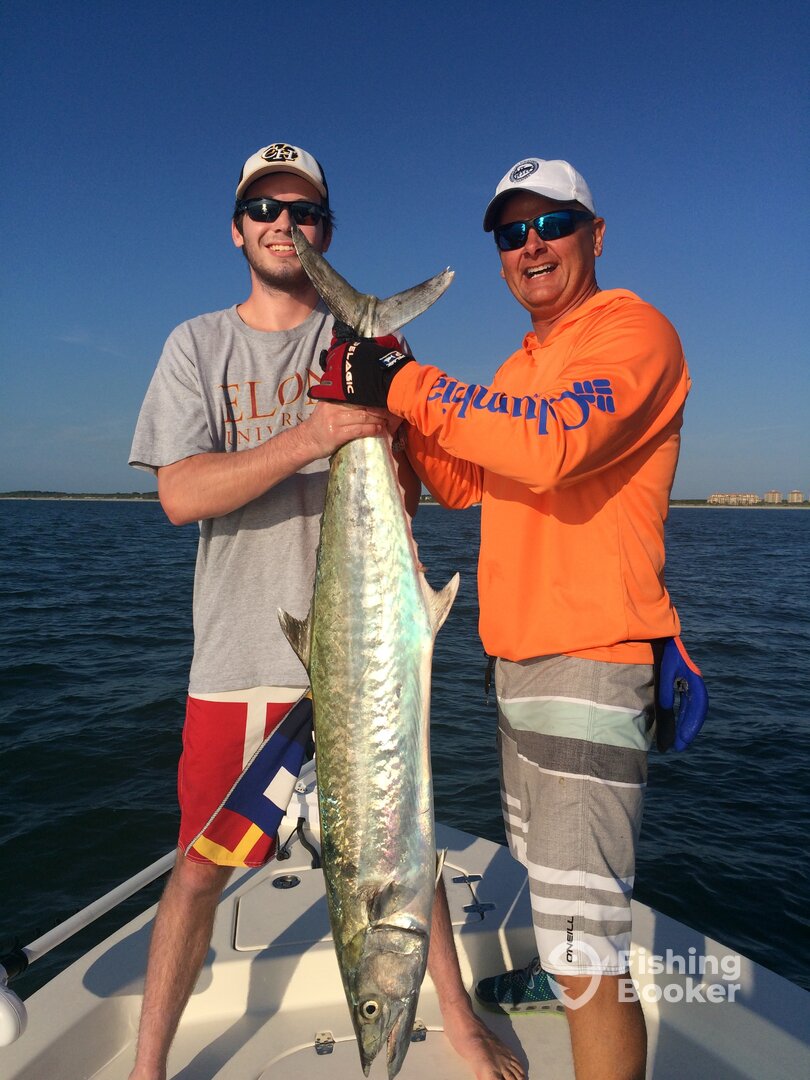
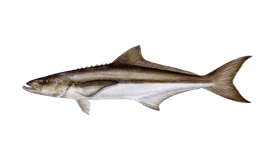
Cobia
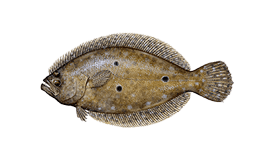
Flounder
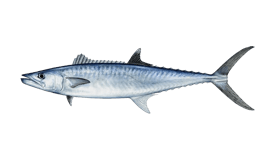
King Mackerel (Kingfish)
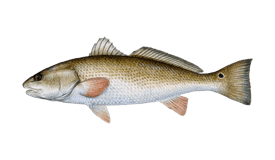
Redfish
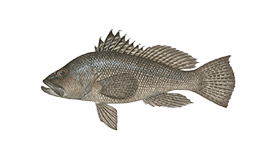
Seabass (Black)
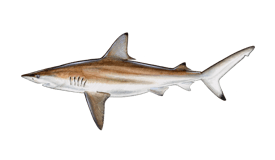
Shark (Blacktip)
Trip Summary
Trip Summary
28 July 2016
Welcome to Fish Whisperer Charters in Jacksonville, FL!
Seas have been cooperative these last few weeks but just recently more of the pattern to be expected this time of year. Trips out to the local reefs/wrecks are much easier and have been very productive. Within the last week, kingfish have been consistent while trolling producing 35lb fish along with a good number of 12-15lb fish taken. You can view the latest catches on our Facebook Page where I post on every charter.
There are a few choices to net your pogies with South of the Mayport jetties a little less consistent than the North. I've gone North to Amelia Island several times in the last week and the bait is everywhere along with the 2 35lb kingfish we enjoyed just off of the beach ;)
The local reefs are producing consistently while trolling pogies at 25ft and 45ft in 65-70ft of water. There have also been some barracuda, sharks, and cobia hit while trolling out there so be prepared for anything! Yesterday, we couldn't keep bait in the water for more than 10 mins before a hit (good problem to have!) Flounder, trout, & redfish have been consistent along the docks with the best bite for me in early morning shifting tides.
(TTPs - Tactics, Techniques, & Procedures)
Bait is the priority with "pogy/pogies" or Atlantic Menhaden being the best bet, right now. I use a 9ft castnet which works for me if they are a bit spread out or bunched up. I'll idle up to them, shift into neutral, and hopefully "one & done" it. If not, a couple of casts will fill the baitwells. If you're not having luck on the pogies, have a sabiki rig handy and sabiki your bait off the bottom. Native bait to an area you're going to fish is very productive.
For trolling, I try skirted baits along with bare bait on #4/5 single strand wire kingfish rigs. Once I've figured out what's hot, I'll refine the spread. I fish 2 downriggers, 1 long line out to 100ft, and a propwash bait. The downrods are typically 25ft & 45ft deep but adjustments should be made based on the information you gather from your sonar suite. If marks are more consistent at a different depth, adjust accordingly.
If using the pogies, remember to troll slowly so as not to drown the baits too quickly. Most importantly, USE CHUM. I use a combination of menhaden oil drip/chum bag full of goodies and have been rewarded handsomely. When the bite slows down for the troll, try some bottom fishing in the same area and you may get some surprise cobia/seabass. If there are ever any questions, just post them up on my Facebook Page and I'll do my best to get back with you.
Catch em' up and stay safe!
Until next time...
Fair Winds & Following Seas,
Capt Kris
